
Prepare-se, pois neste post você provavelmente irá vomitar o triplo do que já vomitou nessa semana.










Prepare-se, pois neste post você provavelmente irá vomitar o triplo do que já vomitou nessa semana.









It’s not often that scientists make people watch the first episode of 24 in the name of science. It’s even rarer that they pick Jack Bauer’s exploits because they wanted to show volunteers something “more true to life”. Then again, as Jason Chan dryly says, “Some of the earlier episodes were not as far-fetched as the later ones”.
Chan’s study is the latest to show how easy it is to disrupt our memories, and supplant what we think we know with misinformation. In this case, he and colleague Jessica LaPaglia from Iowa State University showed volunteers the pilot episode of 24 and then selectively rewrote some of their memories of the show’s events. For example, some of the volunteers came to believe that an assassin (Mandy!) knocked out a flight attendant with a stun gun, when she actually used a hypodermic syringe.
It wasn’t just a simple matter of saying Mandy used a stun gun. That wouldn’t have worked. Instead, Chan and LaPaglia fed their volunteers with false information immediately after they had actively remembered what they had seen. Then, and only then, did the new memories overwrite their old ones.
The trick relies on a quirk of memory that has come to light in recent years. I’ve written about it before:
Every time we bring back an old memory, we run the risk of changing it. It’s more like opening a document on a computer – the old information enters a surprisingly vulnerable state when it can be edited, overwritten, or even deleted. It takes a while for the memory to become strengthened anew, through a process called reconsolidation. Memories aren’t just written once, but every time we remember them.
This means, somewhat ironically, that the remembering something creates a critical window in which memories can be erased or manipulated. Many scientists have done this in rodents and humans using drugs or conflicting information. But these experiments usually manipulate single simple memories, such as a drug craving or a fearful association between a colour and an electric shock.
Chan and LaPaglia have now used the reconsolidation window to change declarative memories—facts and knowledge that we consciously recall. “We have people forming a very complex memory of a story that lasts 40-50 minutes and changing specific details within that larger context,” says Chan. “This is what’s new. It’s a pretty important step for demonstrating the fundamental importance [of reconsolidation] in humans.”
After showing the pilot episode of 24 to 146 volunteers, Chan and LaPaglia asked them to either play Tetris or answer memory-testing questions about the video. Twenty minutes later, they listened to a short audio recording that supposedly recapped the episode, but that secretly changed some details—for example, swapping Mandy’s syringe for a stun gun. Five minutes later, everyone took a final true-or-false test about what they had originally seen.
In this final test, the volunteers were worse at accurately recalling details that were changed in the audio recap, but only if they had previously answered questions that made them recall the video. Those who played Tetris were unaffected.
So, taking the quiz destabilised the volunteers’ memories of what they were quizzed on, paving the way for the false recap to mess with their knowledge. This worked even when volunteers correctly remembered what happened in the episode during the first quiz—the incorrect audio still changed what they thought they knew.
Through repetitions and variations of this basic experiment, Chan and LaPaglia showed that the effect lasts a long time, even if the final test followed the audio recap by a day rather than 5 minutes. But for the trick to work, the false information needs to come quickly and be very specific. If 48 hours passed between the first quiz and the audio recap, rather than 20 minutes, the original memories stay unchanged. And if the recap involved a different scenario—say, an assassin knocking out a flight attendant in the context of drug trafficking rather than terrorism—the new info never overwrote the original memory. This explains why we’re not constantly upsetting our old memories even though we’re constantly exposed to new information.
Chan and LaPaglia also suspect that people need to believe that the new information accurately represents the old set, and not if they consciously detect a factual discrepancy. “If they think there’s misleading information in here, they’ll be much less susceptible to that effect,” says Chan.
Other studies on reconsolidation have found similar results, but this one shows that memory manipulation isn’t limited to the simple products of basic conditioning, but also more complicated bits of knowledge. It supports the work of psychologists like Elizabeth Loftus, who have shown how easy it is to implant people with false memories.
It also fits with a growing body of evidence showing that, despite what people believe, eyewitness testimony is often seriously unreliable. “Say you’ve been questioned by an investigator and you recall the event,” says Chan. “In the next 15-20 minutes, you could run into another eyewitness or overhear investigators talking to each other. Some inaccurate information could update your memory.”
More positively, the study could have implications for treating conditions that involve unwanted memories, such as phobias or post-traumatic stress disorder (PTSD). As Chan and LaPaglia, “Humans are notoriously inept at suppressing unwanted thoughts.” If we try not to think about something, we usually end up thinking about it all the more. Instead, it may be more productive to actively remember what’s troubling us and reinterpret that in a new light, relying on reconsolidation to remake the old memories in a less disqueting way.
Acceptance and commitment therapies for PTSD work along similar lines, but it’s often assumed that they help people to put the past behind them or to disconnect their experiences from negative feelings. But Chan and LaPaglia suggest that such techniques might actually be exploiting the reconsolidation effect to actually rewrite the past, rather than just severing our connections from it.
Reference: Chan & LaPaglia. 2013. Impairing existing declarative memory in humans by disrupting reconsolidation. PNAS http://dx.doi.org/10.1073/pnas.1218472110
PS: I love that reference 55 of this paper is “24 12:00 a.m.–1:00 a.m. [dvd]. Fox Television Studio, producer; 60 min, sound, color”. And reference 56 is “Neave P (2009) Tetris N-Blox (Tetris Holding, LLC, Hawaii).”
More on memory:
More on memory:
· Rewriting fearful memories by bringing them back to mind
· Scientists create mice that automatically label new memories for easy reactivation
· Five myths about memory (and why they matter in court)
· Memory improves when neurons fire in youthful surroundings
· The extended mind – how Google affects our memories
· Beta-blocker drug erases the emotion of fearful memories
· Memories can be strengthened while we sleep by providing the right triggers
· The guardians of fear – molecules that provide safety nets for scary memories
· Erasing a memory reveals the neurons that encode it
· Drugs and stimulating environments reverse memory loss in brain-damaged mice

Gaboon viper showing off its fangs. Credit: Brimac The 2nd
“It’s like, how much more black could this be? And the answer is none. None more black.” – Nigel Tufnel, This is Spinal Tap.
The Gaboon viper is a fairly docile creature, and that’s where the good news ends. It also has the longest fangs of any snake—2.2-inch-long weapons that swivel forwards like switchblades. The fangs are connected to such huge glands that they deliver more venom than any other snake—a cocktail of toxins that thin the blood, trigger massive internal bleeding, and can stop hearts.
And to make things much, much worse, the Gaboon viper is virtually impossible to see.
From above, its head looks like a dead leaf. Its five-foot-long body is patterned with rectangles and hourglasses, and shaded in cream, yellow, brown and black. Against the leaf litter of its forest home, the viper simply fades away.
Now, Marlene Spinner from Kiel University has discovered one of the secrets to the Gaboon viper’s exceptional camouflage: The black on its body is really, really black. Not just black, but black. Ultra-black. None more black.
These dark patches also have the texture of velvet, so they’re evenly black from every possible direction. There’s no gloss to them, which creates an illusion of depth. The patches don’t seem to be part of the same surface as the rest of the viper. This, together with the geometric shapes and sharply contrasting colours, break up the snake’s outline and aid its camouflage.
Spinner studied the West African Gaboon viper (Bitis rhinoceros). It’s one of two snakes that people thought were the same, until genetic studies showed that they are dissimilar enough to qualify as separate species.
She looked at the snake’s scales under a powerful electron microscope, which requires samples to be covered in a thin layer of gold. As a result, the pale parts of the viper’s scales developed a light metallic sheen. But the black areas still looked black. That’s a clue—it means that the colour isn’t just produced by a dark pigment, but also by the structures of the scales themselves.
Spinner caught a glimpse of these extraordinarily intricate structures down the microscope. The dark parts of the scale are covered in small ridges, like leaves standing on end (a, below). There are around 1,900 of these leaves in every square millimetre of scale, and each is just 30 micrometres (millionths of a metre) tall.
Spinner zoomed in a thousand times closer, and saw that each leaf was itself covered in a network of even thinner ridges, each just 60 nanometres (billionths of a metre) thick (c). They form a branching pattern like a fingerprint (b). And even the areas between the leaves are covered in hair-like projections (d). The gaboon viper’s black scales contain the most intricate of patterns, in spaces barely wider than a human hair.
When light hits the dark scales, it gets repeatedly reflected and scattered by the tiny leaves and ridges. As it bounces back and forth, it gets increasingly absorbed by dark pigments. In the end, less than 11 percent of any incoming light gets reflected away. This is why the viper’s black patches look so damn black, and evenly so from any viewing angle.
Other closely related vipers don’t use the same nano-scale trick, but there’s a butterfly that does. The Ulysses butterfly (Papilio ulysses) has wings with eye-catching electric blue centres, but their edges are ultra-black for the same reason as the Gaboon viper’s scales. They have a hierarchy of ridges upon ridges that repeatedly reflect incoming light onto absorbing pigments.
Spinner suggests that these tricks could be useful to engineers who work with machines that want to retain as much light as possible, such as solar panels. Admittedly, we have already created blacker-than-black materials that surpass even the viper’s scales. The current record-holder is a surface covered in carbon nanotubes that reflects just 0.045 percent of the light that falls on it. However, it’s extremely fragile. The Gaboon viper might reflect more light, but its black surfaces can cope with months of slithering through rough undergrowth.

Ulysses butterfly. Credit: Notafly.
Reference: Spinner, Kovalev, Gorb & Westhoff. 2013. Snake velvet black: Hierarchical micro and nanostructure enhances dark colouration in Bitis rhinoceros. Scientific Reports. http://dx.doi.org/10.1038/srep01846
Also: Credit to Alok Jha for the Spinal Tap reference
More on structural colours:
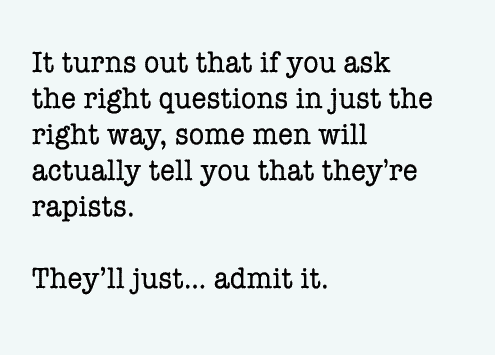

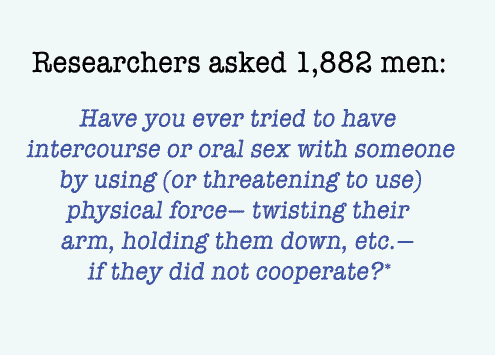
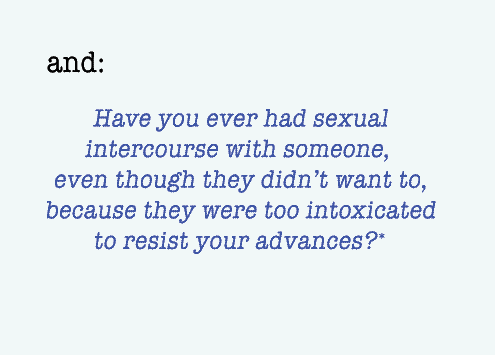



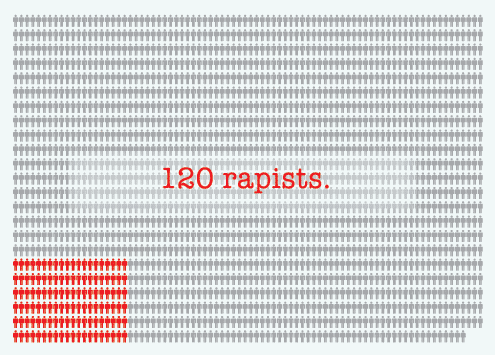


“Repeat Rape: How do they get away with it?”, Part 1 of 2. (link to Part 2)
Sources:
- College Men: Repeat Rape and Multiple Offending Among Undetected Rapists,Lisak and Miller, 2002 [PDF, 12 pages]
- Navy Men: Lisak and Miller’s results were essentially duplicated in an even larger study (2,925 men): Reports of Rape Reperpetration by Newly Enlisted Male Navy Personnel, McWhorter, 2009 [PDF, 16 pages]
By dark-side-of-the-room, who writes:
These infogifs are provided RIGHTS-FREE for noncommercial purposes. Repost them anywhere. In fact, repost them EVERYWHERE. No need to credit. Link to the L&M study if possible.
Knowledge is a seed; sow it.
He’s leaving space on Monday, but not before giving the world a memorable parting gift. ISS Commander Chris Hadfield has captured the attention and imagination of so many during his five-plus months in space via social media and with the many videos he’s recorded while on the International Space Station. This is his final video from the station, and according to his son Evan Hadfield — who has helped orchestrate the Commander’s barrage of tweets and images — it is also, coincidentally, the first real music video ever recorded in space.
“With deference to the genius of David Bowie, here’s Space Oddity, recorded on Station,” Hadfield tweeted. “A last glimpse of the World.”
As someone posted in the comments on this video, Hadfield is the new standard of incredible.
(...)
Read the rest of Space Oddity: Hadfield Records First Music Video from Space (14 words)
© nancy for Universe Today, 2013. |
Permalink |
3 comments |
Post tags: Chris Hadfield, International Space Station (ISS), Space Oddity, Videos
Feed enhanced by Better Feed from Ozh
Language is a funny thing. There are about 500 million people who speak English on this planet, and it’s not even the most common language in the world (Mandarin tops the charts at over a billion). Yet, on the other end of the scale, there are somewhere close to 2,000 languages that are spoken by less than a thousand people each. Some of them are more similar than others, but the thing about different languages is they’re always familiar within your realm of experience—to an English speaker, Mandarin sounds like well-structured gibberish (and probably vice verse) until you begin to learn the rules behind the language, then slowly it eases further into your experience, and eventually it becomes just as easy—just as familiar—as English. You become fluent.
At least, that’s what’s supposed to happen. These languages, on the other hand, are almost beyond comprehension. Strange yet beautiful, here are 10 of the most bizarre languages still spoken in the world.
10 ArchiOn the edge of the Caspian Sea in southern Russia is a small village called Archib. With a population of only 1,200 (or less, according to some experts), it’s the last remaining spot in the world where Archi is spoken. Although it’s similar to two other languages from the region—Avar and Lak—linguists consider Archi to be a language on its own, which is fortunate because it definitely deserves a spot on this list.
One of the things that’s so incredible about the language is that for any given verb, there could be as many as 1,500,000 separate conjugations. For comparison, take the English word “run.” You could conjugate that to ran, running, will run, has run, will have been running, and so on. The same thing happens in Archi, but it goes on for a million and a half different variations, depending on the situation. Also notable is the language’s use of “voiceless velar lateral fricatives,” a rare and fancy sounding speech element, best described as the ending sound when you say “Bach.”

The word Yupik is actually used to describe a family of five languages, spoken by residents of Siberia and Western Alaska. Each one of those languages is similar, but different—if two people from a different region met, one might not be able to understand the words spoken by the other, but because of the sentence structure and similar phonetic sounds they could still carry on a basic conversation.
Yupik is what’s known as a polysynthetic language—words are sometimes created that have a very, very specific meaning, to the point of creating a sentence out of a single word. For example, take the word tuntussuqatarniksaitengqiggtuq. It literally means, “He had not yet said again that he was going to hunt reindeer.” It is a word that can only be used for an extremely specific situation and, even more bizarre, none of the individual word parts make any sense unless they’re used in that specific word. The only exception is the word for reindeer, tuntu.
8 Pawnee
When it comes to polysynthetic languages though, there are few that can hold a candle to Pawnee, spoken by Native Americans indigenous to Nebraska. Their alphabet is simple—only nine consonants and eight vowels—but they have multiple words that contain more than 30 syllables. In fact, it’s rare for a sentence to not have at least one word with over 10 syllables.
Unfortunately, the Pawnee language is fast declining. There are still a few seniors who speak Pawnee, but the younger members will usually learn English instead of Pawnee, and it’s expected to become extinct within the next few years.
7 Sentinelese
The Sentinelese language is interesting for one very unusual reason: we don’t really know anything about it. In a world where nearly every bit of land has been explored, there is still a small island in the Indian Ocean that no outsider has ever set foot on—and lived to tell the tale, that is. That’s because the residents of North Sentinel Island have a very strict foreign relations policy—shoot arrows at anybody who comes close.
It’s believed that Sentinelese is probably similar to the other Andamanese languages (which is kind of crazy on its own—all of their nouns are based on body parts), simply because they’re geographically close to each other, but again, we really just have no idea. The most successful attempt at communication with them basically boils down to exchanging different colored buckets. We don’t even know how large the tribe is.
6 Silbo GomeroThe Silbo language of La Gomera on the coast of Spain may be one of the most unique, and uniquely beautiful, languages of the modern day. While most languages incorporate complex sounds, with consonants, verbs, and all that pizazz, the Silbo language is remarkably simple—it’s a whistle language.
The whistles themselves function similarly to the way other languages work; rising and falling pitches can almost perfectly replace words, but they serve one important purpose—La Gomera is largely mountainous, and whistles allow the inhabitants to communicate across great distances. If you yell over a ravine, the sound might reach the other side, but the words will probably be jumbled and distorted, without meaning. If, however, you whistle, the pitch will carry almost perfectly, and the message will reach the other side completely intact. So vowels and consonants are distinguished by dips and rises in the whistled melody, and when they are strung together they create words and sentences.
5 XhosaCompared to most of the other languages on this list, Xhosa could almost be considered mainstream with nearly 8 million speakers. It’s one of the common languages spoken in South Africa, but it bases most of its sentence structure on tonal variations. A single word could have many multiple meanings depending on the pitch and tone of how you say it. Xhosa also has unusual consonants—18 of the recognized consonants are actually clicks. The word itself, “Xhosa,” is pronounced with a click at the beginning.
By this point in history, Xhosa has been understandably mixed a bit with several other languages, including English and Afrikaans, but it originated alongside Zulu and other languages that fall under the umbrella term “Bantu languages,” and there are many similarities between most of these languages.
4 PirahãThe Pirahã language of Brazil is the last remaining of its kind; as far as we know, all the similar languages in the region have gone extinct. Also as far as we know, Pirahã is probably the simplest language in existence, with somewhere between ten and twelve phonemes (sounds). There are no words for colors, and some natives seem to be able to communicate with no words at all, translating the phonetic tone of the words into a series of hums and whistles.
Actually, saying that there are no words for colors in Pirahã isn’t entirely true; they technically have two words which mean “light” and “dark.” Similarly, it’s argued that they don’t have any numbers, either. There are two words in Pirahã that are spelled hói and hoí (note the different accents). According to Daniel Everett, who has spent some time studying the Pirahã tribe, the words mean small quantity and large quantity, respectively. So whether you had 10 sticks or 100, you would use the same word (large quantity), although that could change depending on what you considered to be a lot of something.
3 RotokasIf Pirahã isn’t the simplest language in the world, that honor definitely goes to Rotokas, a small language found in Papua New Guinea. Like Pirahã, it’s believed to only have about 12 phonemes, and since there are no tonal variations between them, their alphabet is considered to be only 12 letters long.
As if that wasn’t enough, Rotokas is also one of the few languages that doesn’t have any nasal phonemes, like the sound you make when you say the letter “n” (it comes through your nose, “nnnn”). Rotokas speakers CAN make nasal sounds, they just don’t—the only time they’ll ever do it is when they make fun of foreigners who accidentally throw in a nasal sound when trying to speak Rotokas, which is sort of hilarious.
2 Khoisan
When it comes to the click languages of Africa, there are two main families; Bantu, which includes the Xhosa language, and Khoisan, which is considered to be the forerunner of Bantu, and one of the oldest languages on the continent. And unlike Bantu, Khoisan languages seem to be falling off the map completely, mostly due to the lifestyles of Khoisan speakers.
Most of the people who speak the various Khoisan languages are spread out across southern/central Africa, and many of them are in incredibly remote areas, and as such are relatively under-researched. A good example of this is the San (Bushmen) of the Kalahari desert, and different dialects exist even between different tribes in similar regions, which makes it difficult to even get a fix on what exactly constitutes the language.
The question usually comes down to this: how do you know when a dialect becomes so distinct that it can be considered a separate language entirely? For example, the Xiri language has approximately 90 speakers. The Korana, somewhere between 6 and 10. These are just a few of the problems linguists have run into while trying to catalog the sweeping variations in the Khoisan languages.
1 !Xóõ (Taa)The Taa language is officially one of the Khoisan languages, but even in that diverse mesh of conflicting dialects and vast tonal ranges, Taa manages to stand out on its own, and it definitely deserves its own entry. To the best of our knowledge, Taa (also known as !Xóõ, but that’s hard to type) has more spoken phonemes than any other language in the world. Some linguists put the number of consonants alone at 164, and at least 111 of those are click sounds—and that only accounts for one dialect, known as West !Xóõn. They also use four different tones—high, mid, low, and mid-falling—providing even more variation in the ways that sounds and clicks can be combined.
As an interesting side note, locals refer to the language as Taa ?aan; Taa means “human being,” and ?aan means language, so it literally translates to the “language of human beings.”
The post 10 Bizarre Languages Still Spoken Around the World appeared first on Listverse.
Cindy DalfovoNo matter the size, cats are always disturbing you in your work...

I am not one of those Wil Wheaton fanboys. I think he’s great and all, but I wasn’t into any of the Star Trek television series, and a place like Comic-Con or Mega-Con or Nerd-Con or Neckbeard-Con is as close to my idea of hell as you can get. Wil Wheaton to me is still Gordie from Stand by Me, a movie I taped off of television and watched every day on a crappy VCR after school for something like 3 months in the 90s. I don’t have a particularly strong sense of affection for Wheaton, though: He seems like a nice guy, and he’s been great for nerd culture, his appearances on Big Bang Theory notwithstanding.
But last night, I was sitting in my car about to go into pub trivia and checking Facebook on my phone, when I ran across a story that many of you have may have also seen on your Facebook walls. I’m not sure what compelled me to read it, but five minutes later, my heart may have swollen 3 sizes and there was definitely something in my eye.
The whole Facebook post is great (as the 11,000 likes suggests). The first half of it talks about Wheaton’s experiences at these fan conventions, how he tries to please everyone without giving himself up completely. Everyone who attends these conventions and signings thinks they know him, and he wants to be able to listen to everyone’s story and sign their stuff, but it’s also important for him to be able to move the line along, be respectful of everyone, and not get too intimate with strangers (for instance, no, he will not go have a beer with you, dude who he’s never met).
But then he gets to the point of the story, and it’s a doozy.
On Saturday, a young woman walked up to my table with her husband and her two children. She handed me a typed letter and told me that she knew she wouldn’t be able to get through what she wanted to say to me, and would I please read it.
I unfolded it, and read her story. When she was a young girl, she had a serious complication due to her Lupus, and her doctors told her that she would never walk again. She had a photo of me, though, that she took with her to physical therapy every day, and the therapists would hold it up for her and encourage her to walk toward it — toward me — while she recovered. She made a promise to herself, she said, that she would walk again some day, and if I was ever in her town, she would walk up to meet me. At the end of her letter, she thanked me for being there, so she could *walk* to meet me.
I looked up at her through tears, and she looked back at me through her own. I stood up, walked around my table, and put about fifteen feet between us. I held my arms open, and asked her to walk over to me. She began to cry, and slowly, confidently closed the distance between us. I embraced her, and we stood there for a minute, surrounded by thousands of people who had no idea what was going on, and cried together.
“I’m so proud of you,” I said, quietly, “and I am so honored.”
We wiped the tears away, and I sat back down to sign a photo for her. I looked at her young children. “Your mom is remarkable,” I said, “and I know you don’t get it, because she’s, like your mom? But you have to trust me: she is.”
The kids nodded, and I could tell that they were a little freaked out by the emotion of the thing, even if they didn’t understand it. They looked at their father, who said, “Mommy’s okay. Mommy’s okay.” That made me tear up again. Mommy was okay, and she is a remarkable woman who defied the odds and her doctors, and *walked* up to meet me. I’m still overwhelmed when I think about what that means, and how I was part of it.
The power of celebrity can be amazing, if it’s in the right hands. I don’t think, however, that there’s very many people who handle that responsibility with as much grace, respect, and kindness as Wil Wheaton. He’s a good goddamn guy. Read the whole post here, and give the guy a “like” to show your appreciation.
The post The Wil Wheaton Story That Will Make You Sob In Your Cheerios appeared first on UPROXX.


“Yeah, they say three years’ salary.”
Michael Scott, The Office
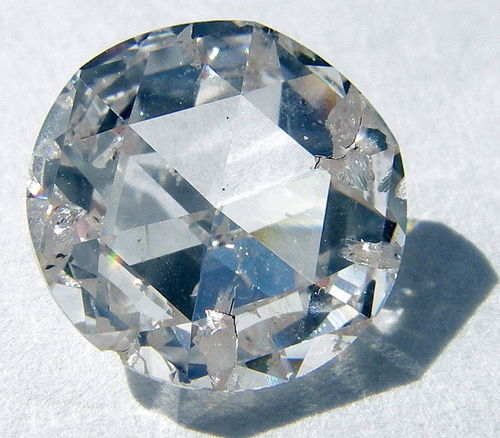
American males enter adulthood through a peculiar rite of passage - they spend most of their savings on a shiny piece of rock. They could invest the money in assets that will compound over time and someday provide a nest egg. Instead, they trade that money for a diamond ring, which isn’t much of an asset at all. As soon as you leave the jeweler with a diamond, it loses over 50% of its value.
Americans exchange diamond rings as part of the engagement process, because in 1938 De Beers decided that they would like us to. Prior to a stunningly successful marketing campaign 1938, Americans occasionally exchanged engagement rings, but wasn’t a pervasive occurrence. Not only is the demand for diamonds a marketing invention, but diamonds aren’t actually that rare. Only by carefully restricting the supply has De Beers kept the price of a diamond high.
Countless American dudes will attest that the societal obligation to furnish a diamond engagement ring is both stressful and expensive. But here’s the thing - this obligation only exists because the company that stands to profit from it willed it into existence.
So here is a modest proposal: Let’s agree that diamonds are bullshit and reject their role in the marriage process. Let’s admit that as a society we got tricked for about century into coveting sparkling pieces of carbon, but it’s time to end the nonsense.
The Concept of Intrinsic Value
In finance, there is concept called intrinsic value. An asset’s value is essentially driven by the (discounted) value of the future cash that asset will generate. For example, when Hertz buys a car, its value is the profit they get from renting it out and selling the car at the end of its life (the “terminal value”). For Hertz, a car is an investment. When you buy a car, unless you make money from it somehow, its value corresponds to its resale value. Since a car is a depreciating asset, the amount of value that the car loses over its lifetime is a very real expense you pay.
A diamond is a depreciating asset masquerading as an investment. There is a common misconception that jewelry and precious metals are assets that can store value, appreciate, and hedge against inflation. That’s not wholly untrue.
Gold and silver are commodities that can be purchased on financial markets. They can appreciate and hold value in times of inflation. You can even hoard gold under your bed and buy gold coins and bullion (albeit at a ~10% premium to market rates). If you want to hoard gold jewelry however, there is typically a 100-400% retail markup so that’s probably not a wise investment.
But with that caveat in mind, the market for gold is fairly liquid and gold is fungible - you can trade one large piece of gold for ten smalls ones like you can a ten dollar bill for a ten one dollar bills. These characteristics make it a feasible potential investment.
Diamonds, however, are not an investment. The market for them is neither liquid nor are they fungible.
The first test of a liquid market is whether you can resell a diamond. In a famous piece published by The Atlantic in 1982, Edward Epstein explains why you can’t sell used diamonds for anything but a pittance:
Retail jewelers, especially the prestigious Fifth Avenue stores, prefer not to buy back diamonds from customers, because the offer they would make would most likely be considered ridiculously low. The “keystone,” or markup, on a diamond and its setting may range from 100 to 200 percent, depending on the policy of the store; if it bought diamonds back from customers, it would have to buy them back at wholesale prices.
…
Most jewelers would prefer not to make a customer an offer that might be deemed insulting and also might undercut the widely held notion that diamonds go up in value. Moreover, since retailers generally receive their diamonds from wholesalers on consignment, and need not pay for them until they are sold, they would not readily risk their own cash to buy diamonds from customers.
When you buy a diamond, you buy it at retail, which is a 100% to 200% markup. If you want to resell it, you have to pay less than wholesale to incent a diamond buyer to risk their own capital on the purchase. Given the large markup, this will mean a substantial loss on your part. The same article puts some numbers around the dilemma:
Because of the steep markup on diamonds, individuals who buy retail and in effect sell wholesale often suffer enormous losses. For example, Brod estimates that a half-carat diamond ring, which might cost $2,000 at a retail jewelry store, could be sold for only $600 at Empire.
Some diamonds are perhaps investment grade, but you probably don’t own one, even if you spent a lot.
The appraisers at Empire Diamonds examine thousands of diamonds a month but rarely turn up a diamond of extraordinary quality. Almost all the diamonds they find are slightly flawed, off-color, commercial-grade diamonds. The chief appraiser says, “When most of these diamonds were purchased, American women were concerned with the size of the diamond, not its intrinsic quality.” He points out that the setting frequently conceals flaws, and adds, “The sort of flawless, investment-grade diamond one reads about is almost never found in jewelry.”
As with televisions and mattresses, the diamond classification scheme is extremely complicated. Diamonds are not fungible and can’t be easily exchanged with each other. Diamond professionals use the 4 C’s when classifying and pricing diamonds: carats, color, cut, and clarity. Due to the complexity of these 4 dimensions, it’s hard to make apples to apples comparisons between diamonds.
But even when looking at the value of one stone, professionals seem like they’re just making up diamond prices:
In 1977, for example, Jewelers’ Circular Keystone polled a large number of retail dealers and found a difference of over 100 percent in offers for the same quality of investment-grade diamonds.
So let’s be very clear, a diamond is not an investment. You might want one because it looks pretty or its status symbol to have a “massive rock”, but not because it will store value or appreciate in value.
But among all the pretty, shiny things out there - gold and silver, rubies and emeralds - why do Americans covet diamond engagement rings in the first place?
A Diamond is Forever a Measure of your Manhood
“The reason you haven’t felt it is because it doesn’t exist. What you call love was invented by guys like me, to sell nylons.”
Don Draper, Madmen
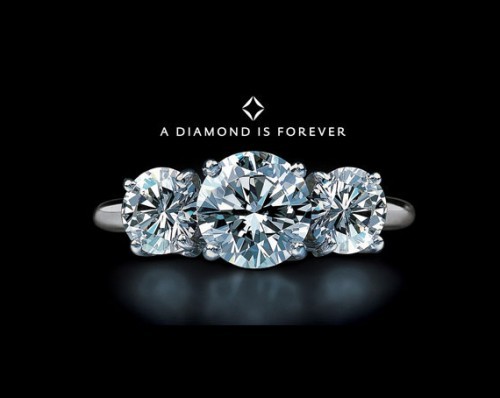
We like diamonds because Gerold M. Lauck told us to. Until the mid 20th century, diamond engagement rings were a small and dying industry in America. Nor had the concept really taken hold in Europe. Moreover, with Europe on the verge of war, it didn’t seem like a promising place to invest.
Not surprisingly, the American market for diamond engagement rings began to shrink during the Great Depression. Sales volume declined and the buyers that remained purchased increasingly smaller stones. But the US market for engagement rings was still 75% of De Beers’ sales. If De Beers was going to grow, it had to reverse the trend.
And so, in 1938, De Beers turned to Madison Avenue for help. They hired Gerold Lauck and the N. W. Ayer advertising agency, who commissioned a study with some astute observations. Men were the key to the market:
Since “young men buy over 90% of all engagement rings” it would be crucial to inculcate in them the idea that diamonds were a gift of love: the larger and finer the diamond, the greater the expression of love. Similarly, young women had to be encouraged to view diamonds as an integral part of any romantic courtship.
However, there was a dilemma. Many smart and prosperous women didn’t want diamond engagement rings. They wanted to be different.
The millions of brides and brides-to-be are subjected to at least two important pressures that work against the diamond engagement ring. Among the more prosperous, there is the sophisticated urge to be different as a means of being smart…. the lower-income groups would like to show more for the money than they can find in the diamond they can afford…
Lauck needed to sell a product that people either did not want or could not afford. His solution would haunt men for generations. He advised that De Beers market diamonds as a status symbol:
”The substantial diamond gift can be made a more widely sought symbol of personal and family success — an expression of socio-economic achievement.”
…
“Promote the diamond as one material object which can reflect, in a very personal way, a man’s … success in life.”
The next time you look at a diamond, consider this. Nearly every American marriage begins with a diamond because a bunch of rich white men in the 1940s convinced everyone that its size determines your self worth. They created this convention - that unless a man purchases (an intrinsically useless) diamond, his life is a failure - while sitting in a room, racking their brains on how to sell diamonds that no one wanted.
With this insight, they began marketing diamonds as a symbol of status and love:
Movie idols, the paragons of romance for the mass audience, would be given diamonds to use as their symbols of indestructible love. In addition, the agency suggested offering stories and society photographs to selected magazines and newspapers which would reinforce the link between diamonds and romance. Stories would stress the size of diamonds that celebrities presented to their loved ones, and photographs would conspicuously show the glittering stone on the hand of a well-known woman.
Fashion designers would talk on radio programs about the “trend towards diamonds” that Ayer planned to start. The Ayer plan also envisioned using the British royal family to help foster the romantic allure of diamonds.
Even the royal family was in on the hoax! The campaign paid immediate dividends. Within 3 years, despite the Great Depression, diamond sales in the US increased 55%! Twenty years later, an entire generation believed that an expensive diamond ring was a necessary step in the marriage process.
The De Beers marketing machine continued to churn out the hits. They circulated marketing materials suggesting, apropos of nothing, that a man should spend one month’s salary on a diamond ring. It worked so well that De Beers arbitrarily decided to increase the suggestion to two months salary. That’s why you think that you need to spend two month’s salary on a ring - because the suppliers of the product said so.
Today, over 80% of women in the US receive diamond rings when they get engaged. The domination is complete.
A History of Market Manipulation
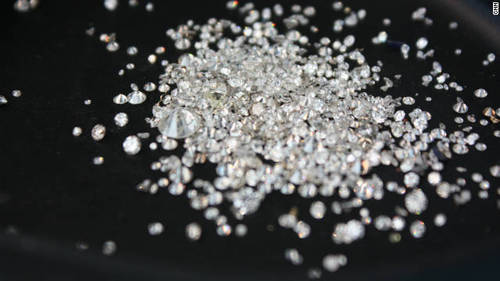
What, you might ask, could top institutionalizing demand for a useless product out of thin air? Monopolizing the supply of diamonds for over a century to make that useless product extremely expensive. You see, diamonds aren’t really even that rare.
Before 1870, diamonds were very rare. They typically ended up in a Maharaja’s crown or a royal necklace. In 1870, enormous deposits of diamonds were discovered in Kimberley, South Africa. As diamonds flooded the market, the financiers of the mines realized they were making their own investments worthless. As they mined more and more diamonds, they became less scarce and their price dropped.
The diamond market may have bottomed out were it not for an enterprising individual by the name of Cecil Rhodes. He began buying up mines in order to control the output and keep the price of diamonds high. By 1888, Rhodes controlled the entire South African diamond supply, and in turn, essentially the entire world supply. One of the companies he acquired was eponymously named after its founders, the De Beers brothers.
Building a diamond monopoly isn’t easy work. It requires a balance of ruthlessly punishing and cooperating with competitors, as well as a very long term view. For example, in 1902, prospectors discovered a massive mine in South Africa that contained as many diamonds as all of De Beers’ mines combined. The owners initially refused to join the De Beers cartel, joining three years later after new owner Ernest Oppenheimer recognized that a competitive market for diamonds would be disastrous for the industry:
Common sense tells us that the only way to increase the value of diamonds is to make them scarce, that is to reduce production.
Here’s how De Beers has controlled the diamond supply chain for most of the last century. De Beers owns most of the diamond mines. For mines that they don’t own, they have historically bought out all the diamonds, intimidating or co-opting any that think of resisting their monopoly. They then transfer all the diamonds over to the Central Selling Organization (CSO), which they own.
The CSO sorts through the diamonds, puts them in boxes and presents them to the 250 partners that they sell to. The price of the diamonds and quantity of diamonds are non-negotiable - it’s take it or leave it. Refuse your boxes and you’re out of the diamond industry.
For most of the 20th century, this system has controlled 90% of the diamond trade and been solely responsible for the inflated price of diamonds. However, as Oppenheimer took over leadership at De Beers, he keenly assessed the primary operational risk that the company faced:
Our only risk is the sudden discovery of new mines, which human nature will work recklessly to the detriment of us all.
Because diamonds are “valuable”, there will always be the risk of entrepreneurs finding new sources of diamonds. Although controlling the discoverers of new mines often actually meant working with communists. In 1957, the Soviet Union discovered a massive deposit of diamonds in Siberia. Though the diamonds were a bit on the smallish side, De Beers still had to swoop in and buy all of them from the Soviets, lest they risk the supply being unleashed on the world market.
Later, in Australia, a large supply of colored diamonds was discovered. When the mine refused to join the syndicate, De Beers retaliated by unloading massive amounts of colored diamonds that were similar to the Australian ones to drive down their price. Similarly, in the 1970s, some Israeli members of the CSO started stockpiling the diamonds they were allocated rather than reselling them. This made it difficult for De Beers to control the market price and would eventually cause a deflation in diamond prices when the hoarders released their stockpile. Eventually, these offending members were banned from the CSO, essentially shutting them out from the diamond business.
In 2000, De Beers announced that they were relinquishing their monopoly on the diamond business. They even settled a US Antitrust lawsuit related to price fixing industrial diamonds to the tune of $10 million (How generous! What is that, the price of one investment banker’s engagement ring?).
Today, De Beers hold on the industry supply chain is less strong. And yet, price continue to rise as new deposits haven’t been found recently and demand for diamonds is increasing in India and China. For now, it’s less necessary that the company monopolize the supply chain because its lie that a diamond is a proxy for a man’s worth in life has infected the rest of the world.
Conclusion
“I didn’t get a bathroom door that looks like a wall by being bad at business”
Jack Donaghy, 30 Rock
We covet diamonds in America for a simple reason: the company that stands to profit from diamond sales decided that we should. De Beers’ marketing campaign single handedly made diamond rings the measure of one’s success in America. Despite its complete lack of inherent value, the company manufactured an image of diamonds as a status symbol. And to keep the price of diamonds high, despite the abundance of new diamond finds, De Beers executed the most effective monopoly of the 20th century. Okay, we get it De Beers, you guys are really good at business!
The purpose of this post was to point out that diamond engagement rings are a lie - they’re an invention of Madison Avenue and De Beers. This post has completely glossed over the sheer amount of human suffering that we’ve caused by believing this lie: conflict diamonds funding wars, supporting apartheid for decades with our money, and pillaging the earth to find shiny carbon. And while we’re on the subject, why is it that women need to be asked and presented with a ring in order to get married? Why can’t they ask and do the presenting?
Diamonds are not actually scarce, make a terrible investment, and are purely valuable as a status symbol.
Diamonds, to put it delicately, are bullshit.
This post was written by Rohin Dhar. He has a very patient wife. Follow him on Twitter here or Google.